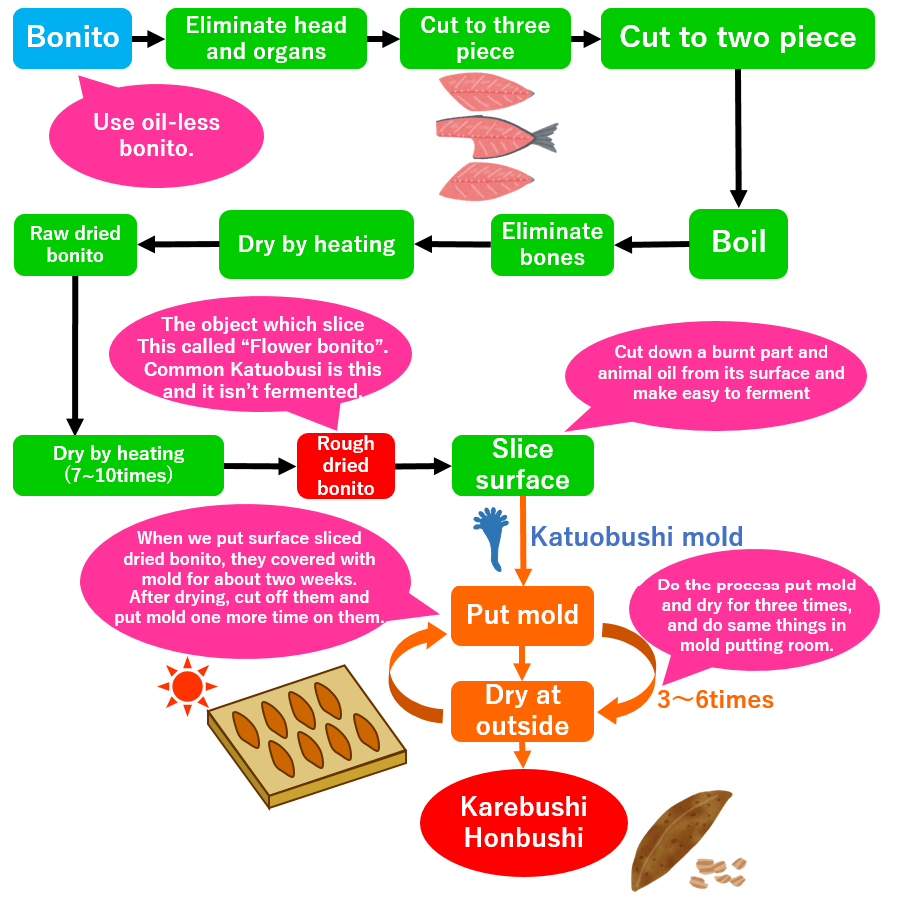Home>Food>Dried bonito
Dried bonito
A dried bonito is strongly rooted in the Japanese food life.
It is used for various purposes such as soup broth, rice ball filling, and Japanese pizza seasoning.
Such bonito is also produced by fermentation.
History
The beginning of the bonito is said to be before the 7th century, and according to the Taiho Ritsuryo Code in 701, dried bonito was a tribute to the emperor at the time.
Then, during the Edo period, Jintaro of the Tosa Domain invented a method of manufacturing something similar to today's bonito.
Many bonito are gotten at Tosa (current Kochi prefecture), and people in there smoke and dry them and make a mold on their surface. It called “Katuo ibusi” (Smoked bonito). In now, it’s called as “Katuobusi”.
Kinds
“Curved bonito” and “Flower bonito” which are always sold at super market aren’t fermented because they are only smoked and curved.
When we put them mold and ferment it many times, the water in it will decrease. It called “Karebushi” or “Hongare”.
Those Katuobusi are harder than any other foods, and when we crash them, they cause the sound as high metal noise.
The time able to preserve them will be longer when water decrease as this.
The bonito was made in Maldives?
As shown at the beginning of the page, the theory that bonito is made in Japan is predominant, but others suggest that it originates in the Atlantic island, Maldives.
This theory is based on the fact that the bonito (Satsuma-bushi, ara-bushi)without moldy, originated in the Maldives. After the production method passed to Japan, a method of adding mold was developed.
The Maldivian sea is home to a striped bonito called Maldivian fish.
It is said that it was made the old Maldives who ate it dried it.
However, the culture of drying fish and using it for cooking has been said to have existed in China and Spain, and it is not sure where the roots of the real bonito are.
How to make a dried bonito
The raw material for bonito is mackerel bonito.
First, cut the bonito into three pieces.
After bonito dies, it produces inosinic acid to digest (aged) itself.
By fixing the cut bonito in high-temperature boiling water, inosinic acid is fixed.
The bonito made by the work up to this point is called “Namari Bushi”.
By making it smoked, Ara-bushi can be made.What we generally eat is Ara-bushi.
In addition to this, Katsuobushi-mold is added, the moisture is reduced and ripened, and the umami ingredients and vitamins are confined, so this Honkare-bushi can be made.


